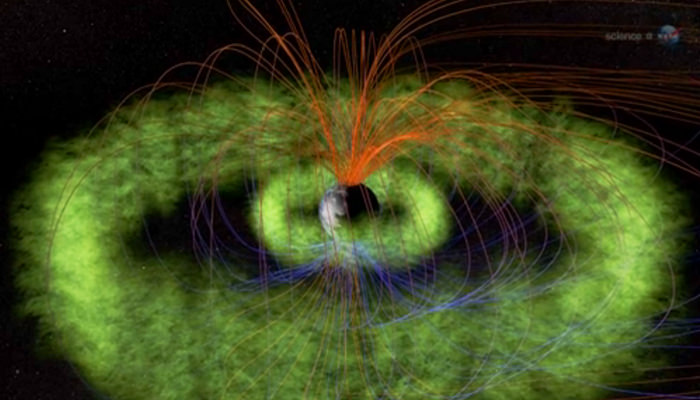Launched on August 30, 2012, NASA’s twin Radiation Belt Storm Probe (RBSP) satellites have captured recordings of audible-range radio waves emitted by Earth’s magnetosphere. The stream of chirps and whistles heard in the video above consist of 5 separate occurrences captured on September 5 by RBSP’s Electric and Magnetic Field Instrument Suite and Integrated Science (EMFISIS) instrument.
The events are presented as a single continuous recording, assembled by the (EMFISIS) team at the University of Iowa and NASA’s Goddard Space Flight Center.
Called a “chorus”, this phenomenon has been known for quite some time.
“People have known about chorus for decades,” says EMFISIS principal investigator Craig Kletzing of the University of Iowa. “Radio receivers are used to pick it up, and it sounds a lot like birds chirping. It was often more easily picked up in the mornings, which along with the chirping sound is why it’s sometimes referred to as ‘dawn chorus.’”
The radio waves, which are at frequencies that are audible to the human ear, are emitted by energetic particles within Earth’s magnetosphere, which in turn affects (and is affected by) the radiation belts.
The RBSP mission placed a pair of identical satellites into eccentric orbits that will take them from as low as 375 miles (603 km) to as far out as 20,000 miles (32,186 km). During their orbits the satellites will pass through both the stable inner and more variable outer Van Allen belts, one trailing the other. Along the way they’ll investigate the many particles that make up the belts and identify what sort of activity occurs in isolated locations — as well as across larger areas.
Read: New Satellites Will Tighten Knowledge of Earth’s Radiation Belts
Audio Credit: University of Iowa. Visualisation Credit: NASA/Goddard Space Flight Center. (H/T to Peter Sinclair at climatecrocks.com.)

